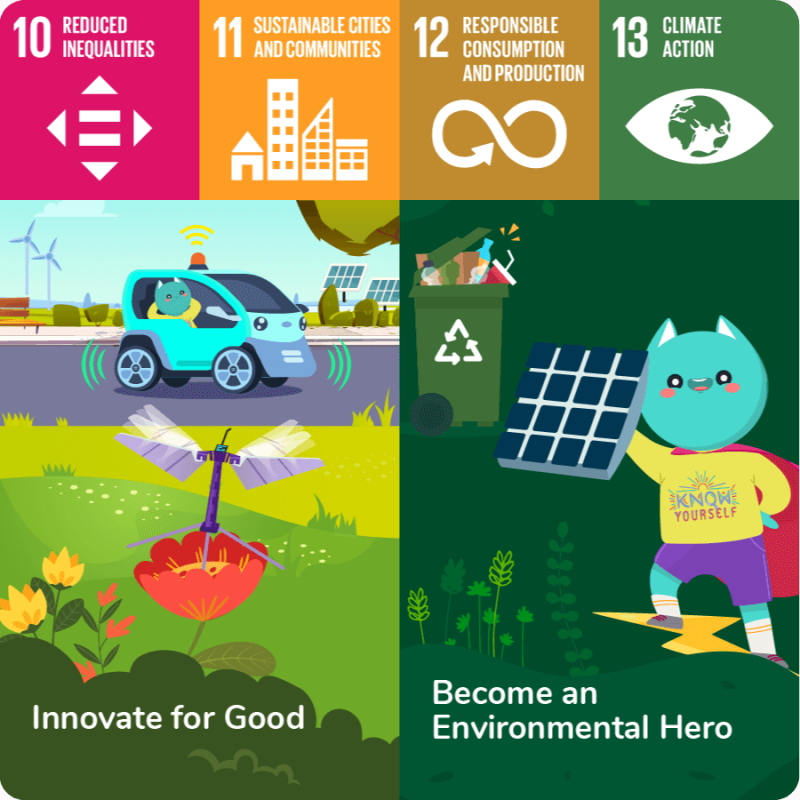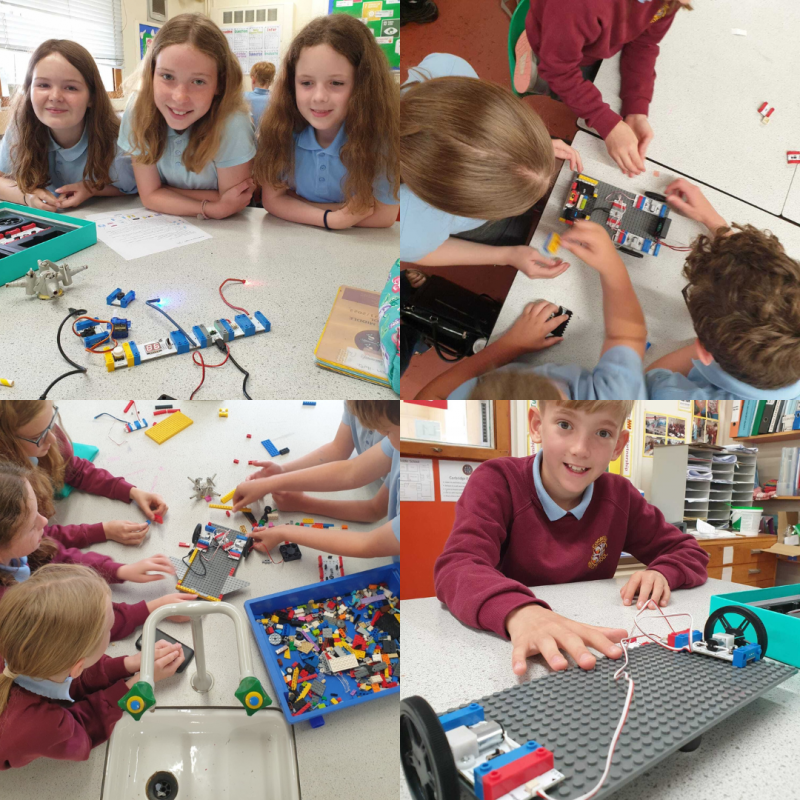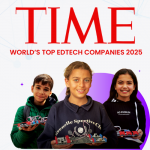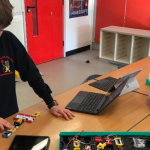By Dr Meryl Batchelder, Middle School Teacher In Northumberland, UK & TeachSDG Ambassador.
As a teacher with an academic background in environmental science, I believe that the purpose of education is to prepare young people for the future. But, even beyond the pandemic, planet Earth is rapidly changing and, depending on where you are in the world, many schools are not yet teaching pupils to be competent in how to use STEM+A (science, technology, engineering, mathematics + art) to solve complex problems or even to develop a meaningful social conscience. This means they might lack essential future skills and be ill-prepared for the challenging times ahead.
Bringing the UN Sustainable Development Goals into my classroom to promote sustainability
To ensure the children in my classroom, whether virtual or in person, understand the concept of living sustainably, I have brought the UN Sustainable Development Goals into my lessons, linking all topics to at least one of these Global Goals. The SDGs are an internationally agreed set of 17 objectives which act as a holistic blueprint for peace and prosperity for people and the planet. They include aims for Zero Hunger (SDG2), Clean Water and Sanitation for all (SDG6), Responsible Consumption (SDG12) and Climate Action (SDG13).
Providing a quality education
If we really want to support young people, we need to move with the times and that is where new developments in EdTech, encompassing education for climate change and sustainability, can prove highly effective. SDG4 is for Quality Education and Target 4.7 of the goal states that by 2030, we should ensure that all learners acquire the knowledge and skills needed to promote sustainable development, including education, sustainable lifestyles, human rights, gender equality, promotion of a culture of peace, global citizenship and an appreciation of cultural diversity. EdTech can really give young people an advantage as we wait for international educational strategies to catch up.
Twin Science is a vibrant EdTech startup which embodies all that is good with EdTech. There is the Twin App which allows teachers to set and track hands-on homework and intelligent quizzes, education kits where students learn crucial concepts like coding, robotics and AI with a plethora of curriculum-aligned lessons. The company has hosted interactive shows live on YouTube produced with Imperial College London and the Royal Academy of Engineering and has recently been selected as a 2022 TechPioneer by the World Economic Forum. They are definitely an EdTech company to watch!
A sticky app to promote sustainability
The Twin App is dynamic and hugely engaging. It provides STEM+A Challenges that pupils can do at home or in the classroom. There are 5 minute Discovery Bits, in which an enormous range of young people, teachers and professionals share short lessons via interactive videos. These are aligned to the SDGs and include a vast array of topics which address the problems, and more importantly the solutions, that can help young people face the challenges ahead. There are ‘lessons’ on autonomous vehicles, robot bees, biomimicry in architecture, novel developments in renewable energy and even the anatomy of jellyfish. Learning through these videobites is much more interesting to young people than the dry objectives in many national curricula. There is even a Discovery Bit created by Antony Jinman, a polar explorer, helping to raise awareness about climate change and the amount of new content is growing as more enthusiastic creators join the team.

[lightbox id=”contact-form-lesson-form” width=”600px” padding=”20px”] [block id=”contact-form-lesson-form”][/lightbox]
Within the Twin App there are also DIY projects that young people can undertake in school or at home, thousands of STEM trivia questions along with a safe & moderated platform that can be opted out if necessary. The app encourages project based learning and allows children to play games, earn coins and level up. Teachers or parents can even access childrens’ monthly skill reports. We all know that many young people love playing on electronic devices but they also love to learn, why not channel their time and energy into something tangible?
Hands-on kits to challenge and engage
In another feat of creativity Twin Science have also developed Twin Robotic Kits which immerse young inventors into the world of robotics and coding. The World Economic Forum announced Twin as one of the eight winners of the inaugural Smart Toy Awards in 2021. Today’s children are the adults of the future, a future shaped by artificial intelligence and robotic technologies. These coding kits, where they can learn the basics of robotic technologies with fun experiments, are based on Arduino technology and allow children to do described experiments or independently-led projects with LEGO™ compatible modules. There is a fabulous education kit that I’m just getting started with my pupils on projects that link to the KS2 and KS3 national curriculum.

Promoting conscience and competence
The company’s philosophy aligns with my own, aiming to improve the ‘future skills’ of children such as problem-solving & critical thinking to understand and question the global-scale problems, creative thinking to generate solutions and innovations to these problems, a sense of social responsibility to care about these problems in the first place and the self-confidence & growth-mindset to tackle these problems with a hopeful attitude. Twin Science also adopts an holistic approach to education and links everything to real life in order to get children to think about how to tackle global problems at a systems-level.
Shaped by insight from working with thousands of children, Twin Science has a STEM4Good approach to inspire children. The app and kits encourage children to actively think, stay curious and keep questioning to prepare them for tomorrow’s challenges and jobs; design and creativity, drawing and imagination, exploration and curiosity, robotics and problem solving, observational and reasoning and communication and self awareness. This platform is transformational for teaching!
It’s wonderful that the company also has a huge social conscience. For each digital subscription purchased, they give one digital subscription to a child from an economically disadvantaged background. For each kit purchased, they donate a portion to the World Science Movement (WSM), which aims to give children in emergent nations better access to STEM education.
Changing with the times
Despite being a relatively old teacher in age, I’m a new advocate for EdTech. To address issues such as climate change and biodiversity loss young people will need practical skills needed in order to transition towards a net zero lifestyle alongside creative thinking and develop technological solutions in the future. Where better to start than early in their journey through school? Twin Science is suitable for children of ages 7 to 12. Problem solving will build resilience and give pupils the ability to cope with, and rise to, the inevitable challenges and set-backs they will meet in the course of their lives, and come back stronger from them.
Finally, as a parent of two teenagers soon to depart for university to study STEM subjects, I just wish Twin Science had been founded a decade ago. Then my children, and I, could have benefited from this technology. They would have loved the meaningful, sticky edutainment provided by the app and kits or recommended ideas for practical hands-on projects would have kept them busy. Nonetheless, as a teacher, I still have the time to embrace EdTech and transform my teaching.



